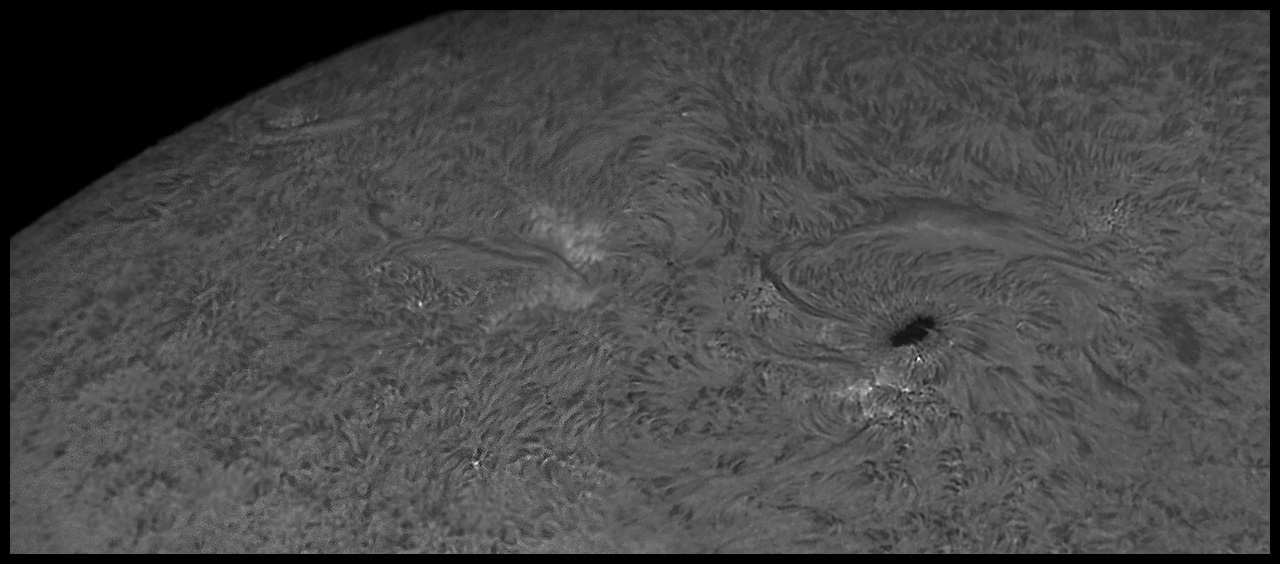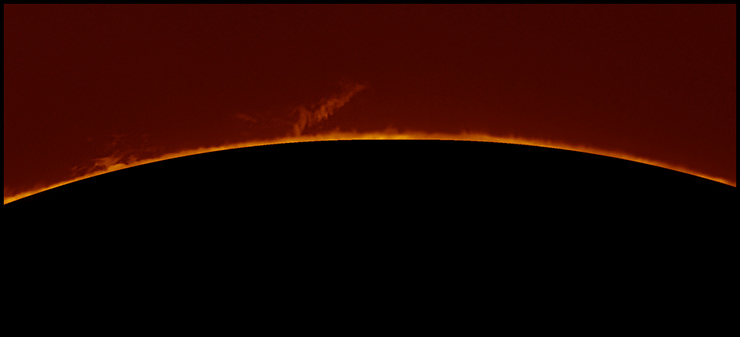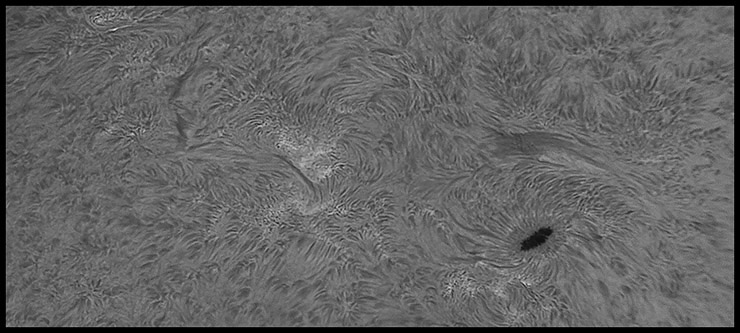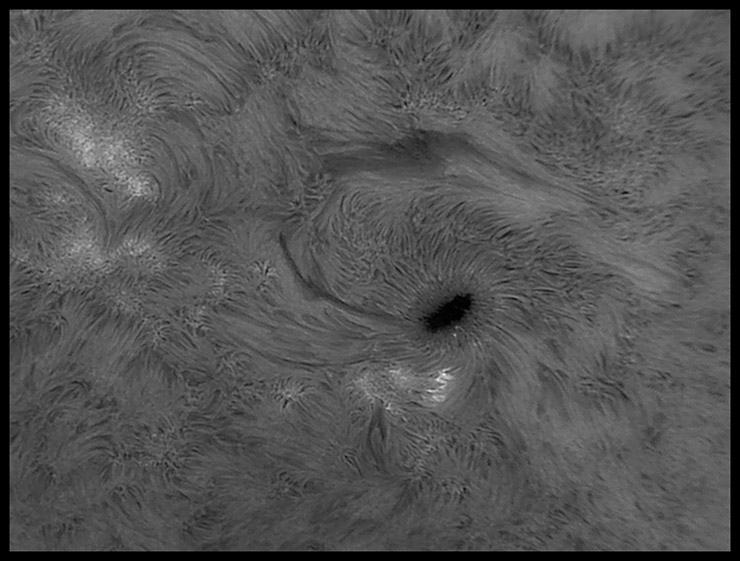The Spot Returns
06/12/2016. That big solo sunspot that rotated out of view a couple of weeks ago has rotated back into view in the last couple of days, and it remains a beauty. You'd never guess there were some spotless days on the Sun just last week.

Six Frame Mosaic
the usual outfit
best 10% of four 1,000 frame clips for surface detail
best 10% of two 500 frame clips for prominences
AutoStakkert 2 to stack; Registax 6 to sharpen; Photoshop to assemble.

Two panel mosaic of the part what matters.
G'wan: click for a closer view.

A lot more exposure shows plasma above the solar limb.
(10ms vs 4ms, more gain, different gamma.)
And yeah, you do still need to click the image.
6/13/2016. It's not that I don't have anything else to do, it's just that the air is clear. So of course I set up the solar telescope and got back on the new/old spot as soon as it was out from behind the pines (which would be about noon-thirty).

Two panels, 1000 frames each. Best 20%
Click it.
6/14/2016. Tips: Try using only the best few percent of each thousand frame stack, relying on the denoise and deringing options in Registax to keep noise under control. And use the auto-alignment-point generation routines in Autostakkert to prepare for stacking. And when you use CameraRaw to open the 16-bit TIFFs, play some with the "Clarity" slider. Move it left from par and see what happens.
I've already reduced today's 11GB of data three times. Tonight, once more from the top, and we'll see what's what.

Love the two little "sparks" on the edge of the big spot. They're a couple of thousand miles apart.